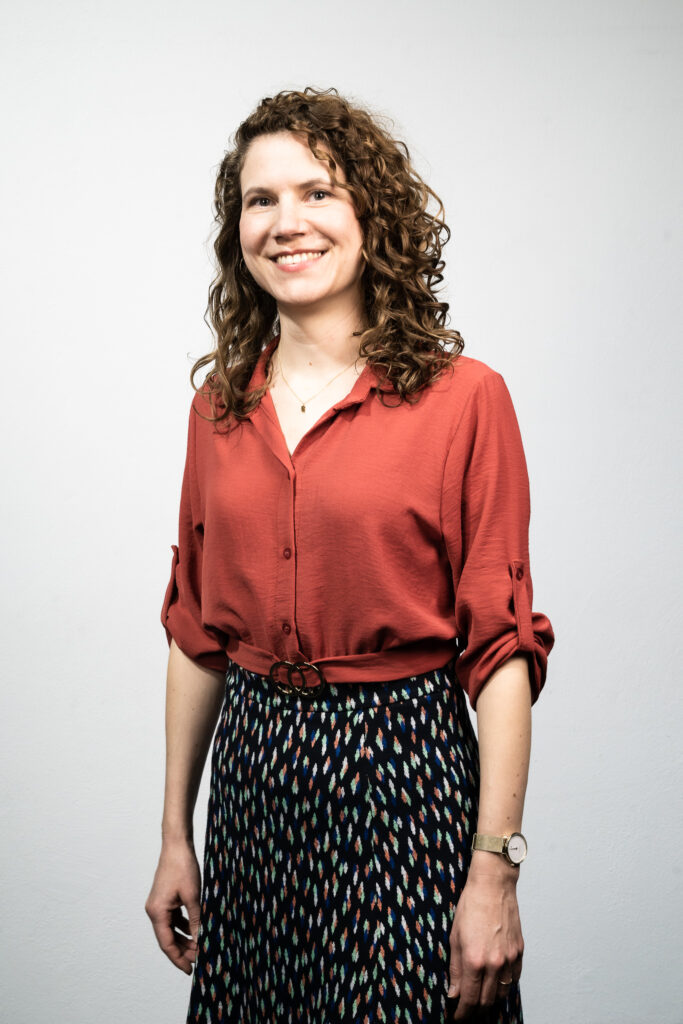Carolin Enzingmüller
IPN – Leibniz Institute for Science and Mathematics Education
Junior Principal Investigators
Carolin Enzingmüller

“I have expertise in various design methodologies to develop, evaluate, and improve STEM activities and materials. At the KielSCN, I will explore design thinking as a tool to engage diverse stakeholders in science communication and to co-create inspiring experiences.”
IPN – Leibniz Institute for Science and Mathematics Education
Junior Principal Investigator
E-Mail: cenzingmueller@kielscn.de
Telephone: +49 431-880 3145
Website
Academic Career
- since 2024: Principal Investigator at KielSCN and research scientist at Kiel University working on a strategy for science communication
- since 2016: Research scientist and postdoc at IPN – Leibniz Institute for Science and Mathematics Education
- 2015 – 2016: Trainee teacher at Gymnasium Marne Europaschule
- 2011 – 2015: Research scientist at the Department of Biology Education and Dean’s Office at the Faculty of Science at Potsdam University
- 2009 – 2011: Research scientist at the Department of Biology Education at IPN – Leibniz Institute for Science and Mathematics Education
- 2003 – 2009: Studies in Biology, German and Philosophy at Kiel University
Publications
- Enzingmüller, C. and Marzavan, D. (2024). Collaborative design to bridge theory and practice in science communication JCOM 23(02), Y01.
- Enzingmüller, C., Parchmann, I., & Schnoor, L. (2024, Mär). Let’s talk SCIENCE! (Podcast): Folge 24 – Wissenschaftskommunikation: Wege, Teilhabe und Herausforderungen?
- Landis, S. H., Piecyk, A., Reitz, M., Enzingmüller, C., Schulenburg, H., Bosch, T., Dierking, K., Deines, P., Hunfeld-Häutle, J., Rappaport, K., & Duscher, T. (2023). Meet the Metaorganism: A web-based learning app for undergraduate and graduate biology students. Bioessays, 45(10), Artikel 2300043.
- Steegh, A., Enzingmüller, C., & Nordine, J. (2023). Editorial: Designing for contemporary relevance and authenticity—Identity as a lens for reimagining science activities at the interface of science education and communication. Frontiers in Education, 8, Artikel 1339659.
- Claussen, C., Enzingmüller, C., Kremer, K., Schulenburg, H., & Parchmann, I. (2023). Developing science outreach events based on stakeholders’ objectives and expectations: A case study of a lecture day for schools. RISTAL: Research in Subject-matter Teaching and Learning, 6(1), 49-66.
- Enzingmüller, C. (2022). Wissenschaftskommunikation als Design-Challenge. Interview auf Wissenschaftskommunikation.de.
- Broß, C., Enzingmüller, C., Parchmann, I., Schmidt, G. (2021). Teaching Magnetoelectric Sensing to Secondary School Students – Considerations for Educational STEM Outreach. Sensors, 21, 7354.
- Enzingmüller, C., Prechtl, H. (2021). Constructing Graphs in Biology Class: Secondary Biology Teachers’ Beliefs, Motivation, and Self-Reported Practices. International Journal of Science and Mathematics Education, 19, 1–19.
- Enzingmüller, C., Broß, C., Laumann, D., Parchmann, I., & Schmidt, G. (2021). Magnetfelder am Herzen messen. MNU Journal, 74(2), 149-153.
- Enzingmüller, C., Kampschulte, L., & Parchmann, I. (2019). Science Outreach in Sonderforschungsbereichen. in C. Maurer (Hrsg.), Naturwissenschaftliche Bildung als Grundlage für berufliche und gesellschaftliche Teilhabe: Gesellschaft für Didaktik der Chemie und Physik Jahrestagung in Kiel 2018 (S. 548-551). Universität Regensburg.
- Kampschulte, L., Enzingmüller, C., Wentorf, W., Quandt, E., & Parchmann, I. (2018). Medizinische Sensoren entwickeln: Zusammenarbeit verschiedener Disziplinen. Naturwissenschaften im Unterricht – Chemie, 29(164), 41-45.
Projects
- Conception and development of a Science Communication Strategy Hub at Kiel University
- Pop-Up Science! Collaborative design of a scientific exhibition on antibiotic resistance
- Biomagnetic Sensing – Scientific Outreach Project in the CRC 1261
- Communicating the Metaorganism – Scientific Outreach Project in the CRC 1182 “Origin and Function of Metaorganisms”